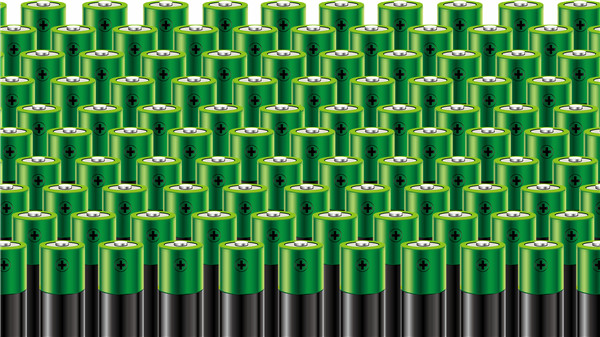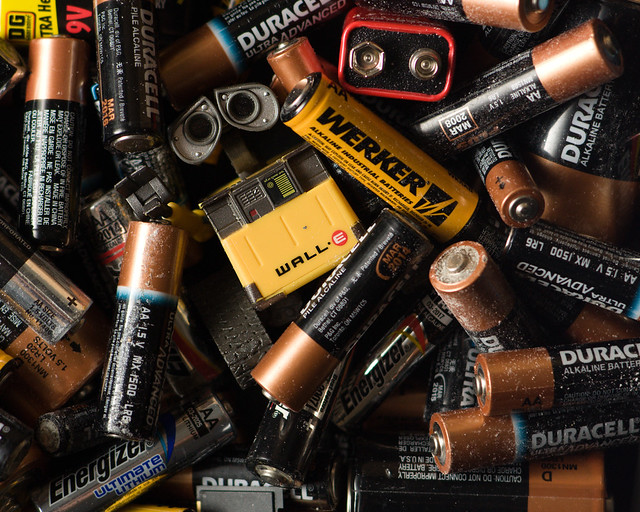Li Ion Phone Battery Components, Advantages and Limitations
Feb 28, 2020 Pageview:825
Why is Li-ion battery the best battery for phone?
Lithium-ion batteries have built a reputation for itself that no product can overcome, at least for the next decade or so. Lithium-ion batteries have proven to be the simplest solution for a chargeable source of energy. Not only that, but nowadays energy is often stored from renewable resources (sun and wind) on to lithium-ion batteries.
Scientists believe that there's no got to find a replacement for lithium-ion batteries. Instead, all of the present research work is to upgrade those batteries. Since the first lithium battery that was designed in 1970 until this moment, all that was done in the field was upgrading and enhancing the same battery "Lithium-ion battery"
The current researches focus on removing the flammable liquid from inside the lithium-ion batteries. The liquid that can cause those batteries to catch fire. The call the new upgrade a Solid-state battery.
It is also worth mentioning that the Lithium-ion batteries now are the most economical solution for portable energy sources. Their manufacturing prices have become very affordable, that they are the number one choice for every single mobile phone, laptop, and even electric cars manufacturers.
Another reason that creates the Lithium-ion batteries irreplaceable -at least for now- is their size. You can store Lithium-ion batteries in bulk without any trouble at all. They are compact, small, flexible and versatile. They can be stored easily and hassle-free. Not only that, but their time period is phenomenal. One battery is often stored for up to 10 years, with others that can be stored for more than that period.
Researches now also are that specialize in the way to integrate Lithium-ion altogether energy storage aspects. However, the matter they're facing is that the discharge rate, which is comparatively small. The challenge now's to supply a lithium-ion battery with a really slow discharging system which will last for quite at some point. Moreover, researches also are concerned by the dimensions of those batteries. they need to form a little battery with an outsized capacity. As we have mentioned before, the batteries of the electric cars before were around two tones, nowadays they're only 300 kg. If they might make it even less, it might be an enormous step within the right direction.
In addition, integrating lithium-ion batteries in additional applications will eventually save the earth. that's because -as previously mentioned- you now can store energy within the battery coming from renewable resources. Thus, reducing the necessity for fossil fuels. If we succeeded in reducing the necessity for fossil fuels even by 5% annually. Then in but a century from now our planet would be saved from the harmful emissions that come from using fossil fuels.
What is inside Li-ion phone battery?
In any given battery, there are two electrodes that are liable for the reaction that gives energy. The electrode that is responsible for releasing electrons during the battery's discharge is called the Anode. The electrode that is responsible for absorbing those electrons that have been released during the discharge is called the Cathode. In a battery, the way the electrodes are arranged is that the Anode is -always- the negative electrode, while the other electrode the cathode is -always- the positive electrode.
The Anode and therefore the Cathode within the Li-ion battery are where Lithium ions are stored. The electrolyte inside the battery carries the positively charged lithium ions from the Anode to the Cathode and vice versa during the discharging and charging processes. The movement of all of the Lithium ions inside of the battery cell frees the electrons in the anode, which then creates a positive charge at the positive current collector. What comes after that is that the electrical current flows from the positive current collector to the negative one producing electricity that operates the device.
The Anode
Graphite is the material used for the manufacturing of the Anode in most of the Li-ion batteries. The graphite used in the anode is either synthetically produced, which is called artificial graphite or mined from the earth, which is called natural graphite. The graphite is then processed before getting used on a copper foil, which is the Anode within the Li-ion battery.
Lithium "as a pure material" is then used as ions salts that are dissolved in the electrolyte of the Li-ion batteries; however, lithium can be used as a material for the anode itself as well in some batteries.
In the Li-ion batteries, the material that the anode is made of must meet some requirements like:
The material must be of good conductivity and porosity.
It should be lightweight and durable.
It must be of low cost to keep batteries cheap.
The material must match the voltage of the cathode of the battery.
The Cathode
There is not one material choice for the manufacturing of the cathode inside of the Li-ion battery. When manufacturing the cathode, the material used must be very pure. There must be zero impurities in the material used to manufacture the cathode. The cathode is made of a mixture of Lithium and other metals, take note that the main element here is Lithium. While the anode material in the Li-ion battery is well optimized, the cathode material is open to enhancements, and today's researches are focused on this specific area.
The cathode that is inside of the Li-ion batteries has active "pure" materials. It is composed of Cobalt, Nickel, and Manganese presented during a crystal structure that forms a multi metal oxide material. Lithium is then added to the mixture at the ultimate step.
Advantages and limitations of the li ion battery for phone
There are some advantages and disadvantages to the usage of Lithium ion batteries.
The Advantages
Lithium ion batteries have high energy density than that of the nickel-cadmium ones that were previously used.
Lithium ion batteries have a lower self-discharge rate than the other rechargeable batteries.
Lithium ion batteries require very low maintenance.
They are widely available worldwide, and there is no current shortage in their numbers.
The Disadvantages
They require the presence of a protection circuit in their construction.
They experience aging and completely die over time.
Lithium ion batteries cost 40% more than other rechargeable batteries.
Despite being used in virtually everything, they are still considered new technology and there is not enough research on them.
- Prev Article: How to Dispose of Lithium Ion Cell Phone Batteries
- Next Article: Lithium Iron Phosphate Battery Price-Cost and Lasting
Leave Message
Hottest Categories
-
Hottest Industry News
-
Latest Industry News














